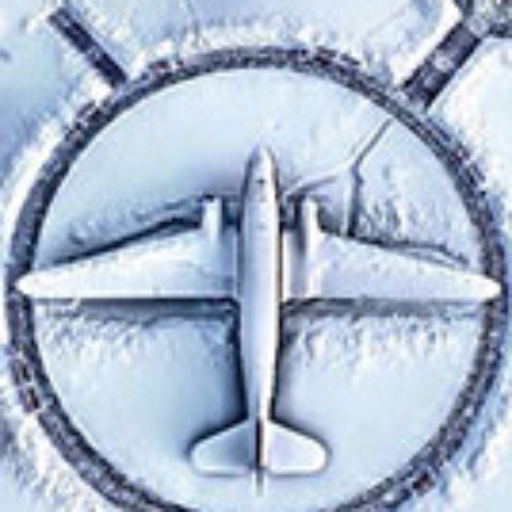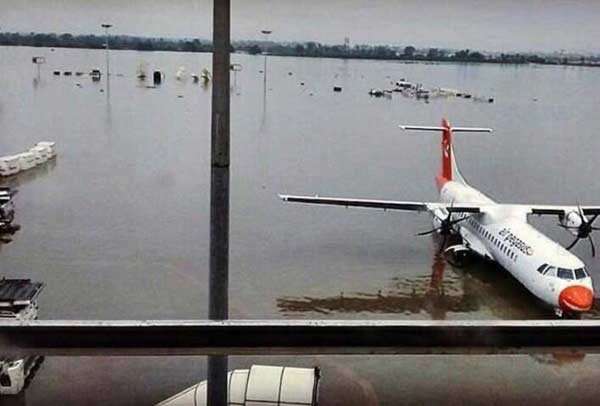Flight into a Cat 5 Super Cyclone: Real Life Flying
Flight into Super Cyclone BOB!
Years ago, when I was flying Survey, I was tasked with ferrying one of our survey equipped Fokker Friendships (F27) from Morocco to Darwin via Malta, Jeddah, Karachi, Calcutta and Phuket. The first four legs from Morocco to Calcutta were pretty uneventful but the sector out of Calcutta nearly ended in disaster.
 Our aircraft carried a GPU (Ground Power Unit) and a lot of scientific equipment so even with fuel slipper tanks (or drop tanks) fitted under each wing the F27-400 was somewhat fuel limited with only a little more than 7 hours endurance.
Our aircraft carried a GPU (Ground Power Unit) and a lot of scientific equipment so even with fuel slipper tanks (or drop tanks) fitted under each wing the F27-400 was somewhat fuel limited with only a little more than 7 hours endurance.
After flying the fourth leg from Karachi, we arrived in Calcutta (now Kolkata) in the early evening and after an eternity clearing customs and immigration we left for our overnight stay at the Oberoi Hotel. A fantastic place to stay and a hotel that is reminiscent of the old days in India.
Pre-Flight
The next morning, the First Officer and I went to the Meteorological Office for a comprehensive briefing prior to our departure for Phuket. The Met Officer handed me a hand drawn chart of expected enroute weather down the Bay of Bengal. The chart was about a meter long, and beautifully drawn however it showed only some towering CU (cumulonimbus) and the odd thunderstorm along the route. No indication was given of any Monsoon activity.
I was not particularly confident in the forecast but thought that since it was only the beginning of the Monsoon season we were unlikely to hit too much trouble. We submitted our flight plan and headed out to the aircraft to complete the pre-flight.
It was early morning and the sky was an ominous slate gray which for some reason left me feeling strangely uneasy. As we calculated the fuel needed I decided to order the maximum fuel we could carry taking into account our expected takeoff weight.
Pre-Flight complete, we started engines, received our clearance from ATC and taxied out for our departure to Phuket.

Into the Super Cyclone
The takeoff was uneventful and everything was normal as we climbed out of Calcutta. As we climbed further we flew into some heavy rain which became heavier each minute. As we passed through FL120 however, the rain became so heavy that it sounded as though we had hail hitting the windshields. The noise was unbelievably loud; so much so that you could hardly think, let alone talk.
It was then that I glanced at our INS/GPS equipment and saw we had an indicated groundspeed of only 80-90 kts.
I was shocked as at that time we were climbing with a TAS (True Airspeed) of about 170kts. We checked again and sure enough, as we climbed, the groundspeed continued to drop until as we passed over the coast of Bangladesh, we had only 60 kts groundspeed.
At this rate I could see there was no way we would have the fuel to make Jakarta. The headwind was so strong we were not making any headway and the aircraft was climbing like an elevator. Straight up and hardly moving forward. If we tried to continue we would run out of fuel and end up in the Bay of Bengal.
I made the decision to return to Calcutta however then had to deal with one of my crew who was vehemently against turning back. It turned out that he had planned to meet his wife in Thailand and so was all for pushing on. There was some robust discussion and I pointed out that there was no way we would have enough flight fuel to make our destination, let alone carry our legal reserve fuel! We were turning back!!!

Mission Aborted!
We called Calcutta Air Traffic Control, explained our situation and advised that we needed immediate return clearance to Calcutta due weather.
We were eventually cleared back to the field, but still had to deal with the cyclones strength . The headwind that had prevented our progress outbound now became a roaring tailwind which gave us a groundspeed of well over 300kts! We were at FL140 but our low groundspeed outbound meant we were less than 10 minutes flight time from Calcutta and needed to lose altitude fast. We left FL140 on descent with idle power and struggled to reduce our super high groundspeed. The First Officer was flying and the unusual situation was overwhelming him, causing him to really lost situational awareness. The turbulence on descent was frightening and torrential rain was now falling at the airfield. We were closing on Calcutta rapidly and ended up over the top at 8000 ft.
Our only course of action was to now make a spiral approach in to land. Far from an ideal way to enter controlled airspace. After what seemed like an eternity, we completed the full instrument approach and landed to see the Calcutta Terminal full of B747s and other aircraft which had been forced into Calcutta due the cyclone.
As we were now an unplanned arrival, it took many hours to explain to the authorities why we had returned and it was late afternoon before we were allowed to refuel and return to our hotel. At least no one complained about another night at the Oberoi.
Later we heard that we had flown straight into an immense tropical cyclone which is now accepted as one of the deadliest ever . Public records show that on the night of April 29, 1991, Cyclone BOB 01 struck southeastern Bangladesh with winds of around 250 km/h (155 mph). The storm forced a 6-metre (20 ft) storm surge inland over a wide area, killing at least 138,000 people and leaving as many as 10 million homeless.
In all my flying career I have never seen such heavy rain and unwillingly setting a speed record of over 300kts GS in a Fokker Friendship was something else! BOB was listed as a Category 5 Super Cyclone and we unknowingly flew into it. We were just happy to have survived.

